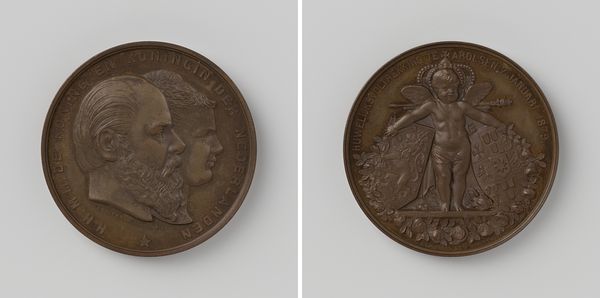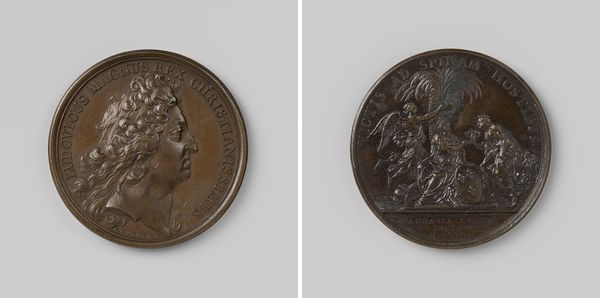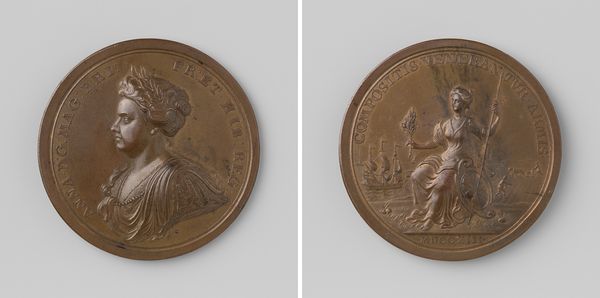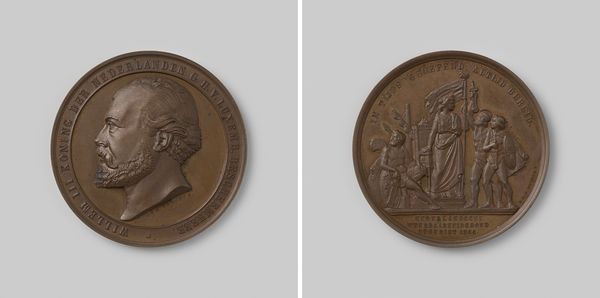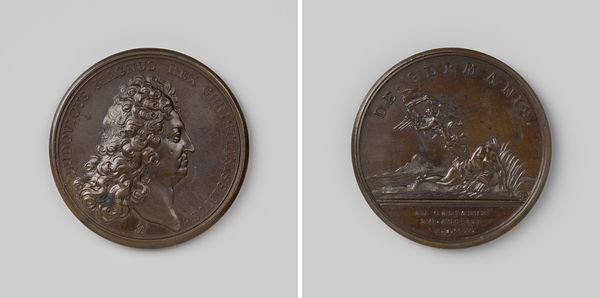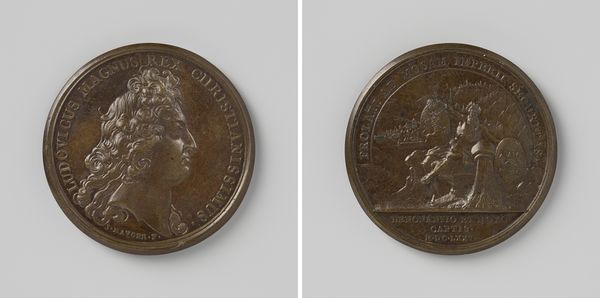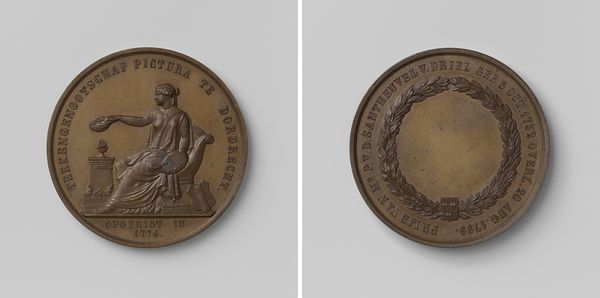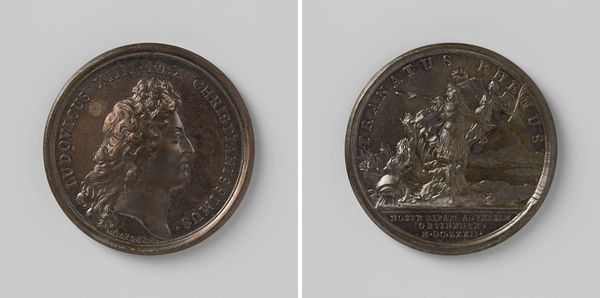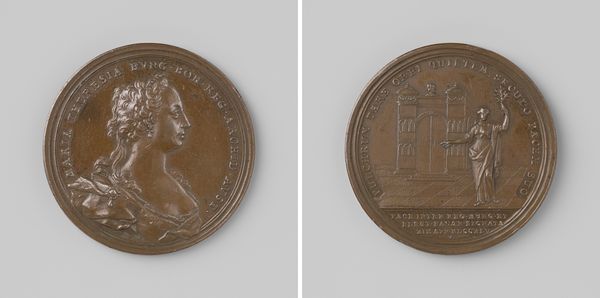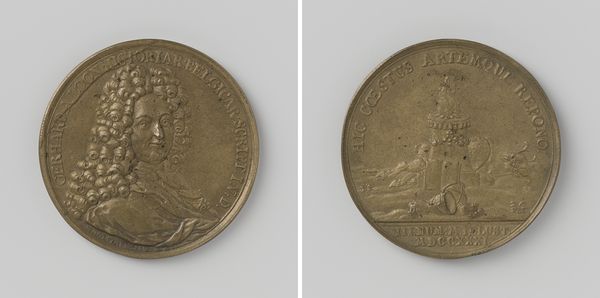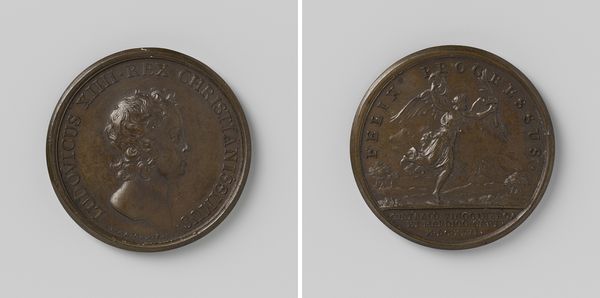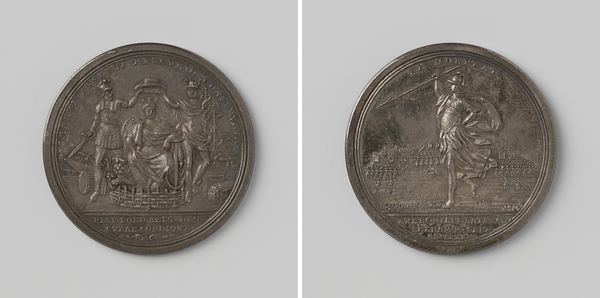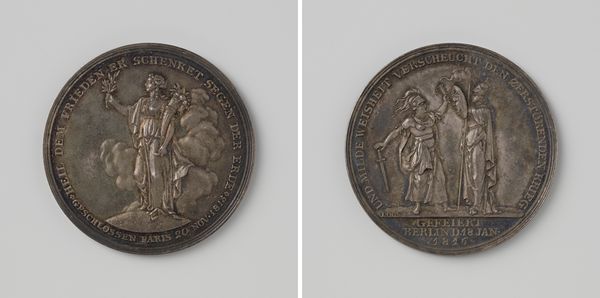
metal, bronze, sculpture
#
portrait
#
neoclacissism
#
metal
#
sculpture
#
bronze
#
sculpture
#
history-painting
Dimensions: diameter 4.8 cm, weight 51.55 gr
Copyright: Rijks Museum: Open Domain
Curator: This is "Vrede van Amiens, ter ere van George III, koning van Engeland," a bronze sculpture crafted by Conrad Heinrich Küchler in 1802. My first impression? It seems incredibly self-aggrandizing. All that elaborate regalia. Editor: Indeed. Visually, the obverse projects a solemn, almost self-satisfied demeanor, the king presented in profile with that very ornate armour. The detail is impeccable but I wonder about the choice of bronze. Is it meant to imply permanence? Curator: Almost certainly. The choice of bronze echoes classical sculpture, fitting in neatly with the Neoclassical movement popular at the time. The profile portrait is also deliberately Roman, meant to connect George III with the emperors of antiquity and their aura of power and legitimacy. We should point out it’s a medallion struck to celebrate the Treaty of Amiens. Editor: And flipping over to the reverse, we have a classical female figure, presumably a personification of peace, and a rather bold Latin inscription “Triumphus Pacis,” which translates as ‘Triumph of Peace,’ and then, even more emphatically, ‘Pax Ubique’— ‘Peace Everywhere.’ Considering Britain's colonial enterprises at the time, that sentiment rings somewhat hollow. It speaks to a grand narrative of peace orchestrated for the benefit of, or at least centered upon, the British monarchy, don't you think? Curator: It's undeniably celebratory from the British perspective. And these visual elements do weave together. The Latin inscription anchors it in a lineage of imperial ambition stretching back centuries. It’s like saying, "We, like the Romans, bring peace… on our terms, of course." Editor: Exactly! So even in a celebration of peace, there is this persistent, underlying statement of dominance, masked under these carefully chosen allegorical symbols and Latin phrases designed to project strength and sophistication. Curator: Despite my initial cynicism about its egoism, I’m intrigued. The medal itself acts as a symbol, revealing how even gestures towards reconciliation can serve as reinforcements of imperial power structures. Editor: Yes, the contrast between its intended message and the underlying assertion of authority offers fertile ground for further investigation. What, truly, does this crafted image of peace conceal about the realities of British power?
Comments
No comments
Be the first to comment and join the conversation on the ultimate creative platform.
